The minor scale is arguably the second more influential scale in western music, behind the major scale. Minor scales are associated with having a sad, mournful quality to them. In the post we’ll take a dive into how the minor scale is constructed and give you all the patterns you’ll need to play minor scales on guitar in any key.
The Minor Scale Formula
There are three types of minor scale. It makes sense to start with the ‘natural’ minor scale as this contains the same sharps or flats as major scales.
The whole-step and half-step pattern for the natural minor scale is shown below.

With this pattern we can create a natural minor scale starting on any note. Below you can see the C minor scale with the root note of C.

Relative Major and Minor Scales
Each natural minor scale is actually the same as its relative major scale. The only difference is that it will have a different root note. For example, in the key of C Major, we have the C Major scale starting and ending on C, with no sharps or flats.

The A Minor scale is the relative minor of C major. This means that A ‘natural’ minor has the same key signatures as C major- no sharps or flats. The only different is that it will start and end on A.
The circle of fifths is a great way to visualise the relative major and minor keys. The outer ring of keys are major, with their relative minor key shown on. the inner ring. For more on how to use this diagram, see our complete guide to the circle of fifths.

My favourite way to remember relative minor key signatures is that the relative minor will start on the 6th degree of the major scale. If we start in A Major, then the relative minor will be F# Minor because F# is the 6th note in A Major.
Intervals of the Natural Minor Scale
Below you can see the intervals for the natural minor scale. It is important to notice the minor 3rd, minor 6th and minor 7th intervals as these are different to the major scale.
- 1st – A – Root
- 2nd – B – Major 2nd
- 3rd – C – Minor 3rd
- 4th – D – Perfect 4th
- 5th – E – Perfect 5th
- 6th – F – Minor 6th
- 7th – G – Minor 7th
In fact, one way to get to a natural minor scale would be to start with the major scale and then lower the 3rd, 6th and 7th notes by a half-tone.
Natural Minor Scale Patterns
To play natural minor scales on guitar there refine basic shapes that can be used. For reference, all the shapes are shown in the key of G Minor. To play minor scales in a different key, simply slide the shapes up and down the fretboard. When you do this, keep an eye on the red dots, as these show where the root note of the scale will be.
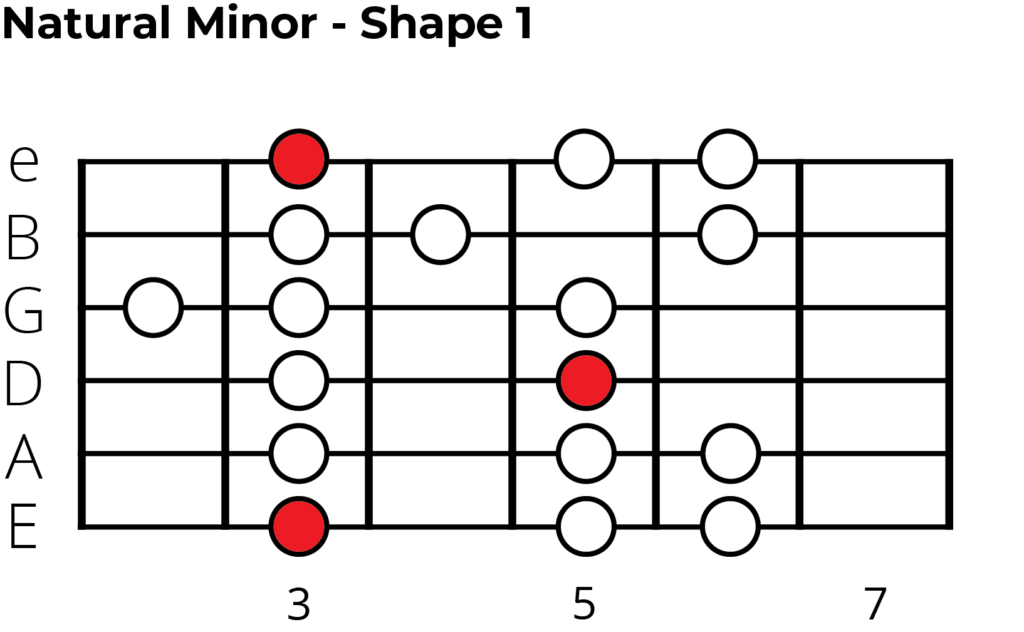
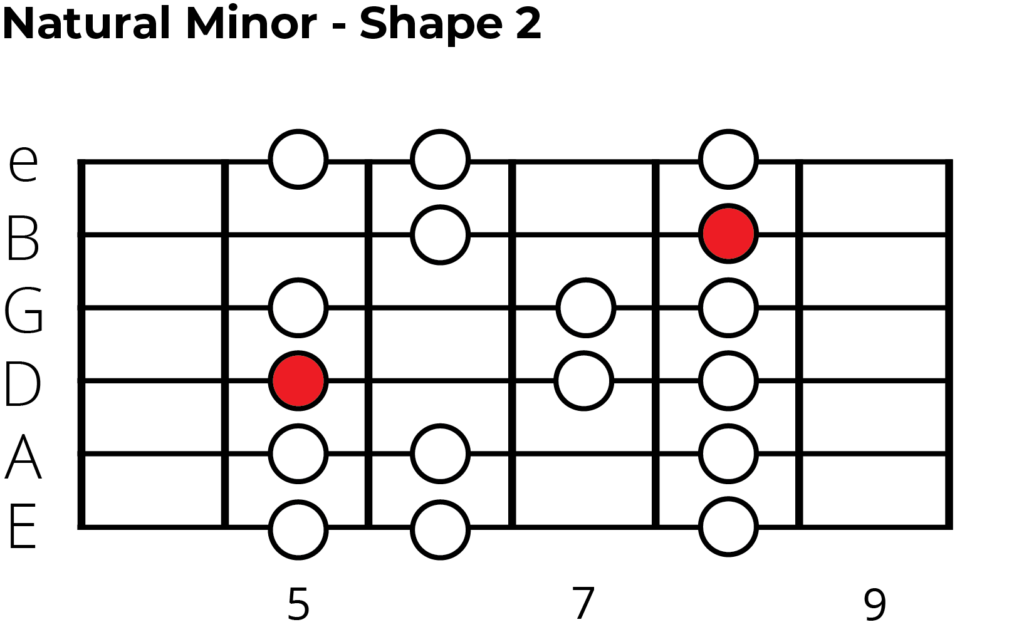


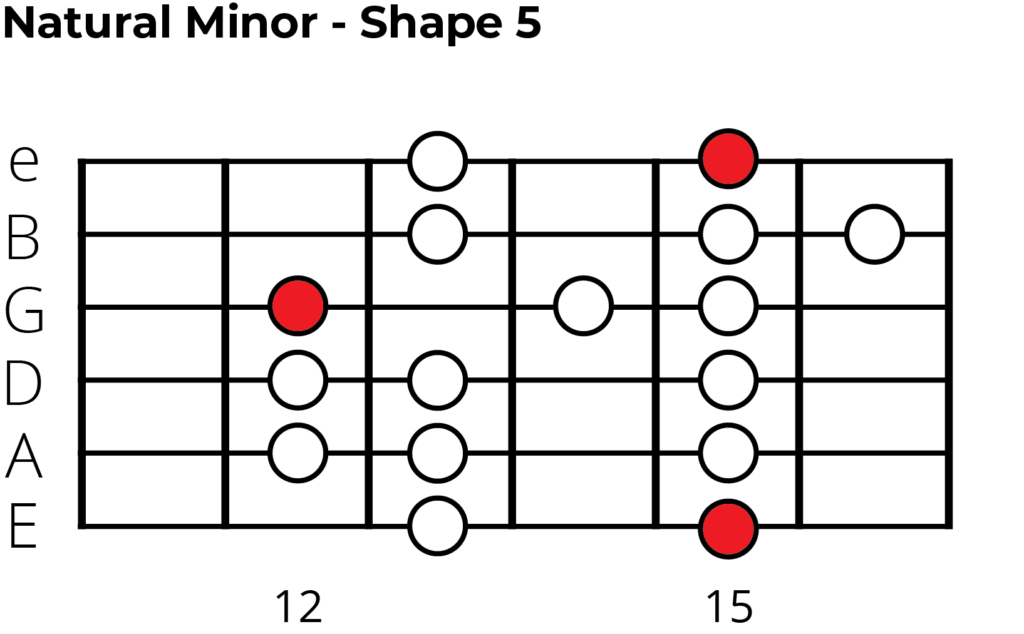
These shapes link together on the fretboard, giving you versatility in how you choose to use them. Players can move between shapes or combine them to play minor scales on any number of strings.
Natural Minor Chords on Guitar
For each natural minor scale we can create a set of chords starting on each note of the scale. Below you can see the chords in the key or A natural minor.

‘Losing my Religion’ by REM is a great example of a song in a natural minor key, it’s actually in A Minor. You can hear how the natural minor key gives a sad or melancholic sound to the music. Here is the song along with the chords for the first section of the song.

When playing a piece in A minor it would be usual to create a progression with these chords. We can also extend these chords to include 7ths, 9ths etc.
‘Ain’t no Sunshine’ by Bill Withers is in the key of A minor too. However the song uses 7th chords which gives a more uplifting sound than standard minor chords.

The Harmonic Minor Scale for Guitar Players
There are three types of minor scales: the natural minor, harmonic minor and melodic minor.
The harmonic minor scale difference from the natural minor scales in only one way, it has a raised 7th note. You can see this below in the example using A harmonic minor.

The harmonic minor was created by Bach so that he could use a perfect cadence in minor keys. This is were the name comes from as it was created to help with harmony. Nowadays it is mostly used by Neo Classical players like Yngwie Malmsteen. Jazz players also use it over a V chord in a minor key.
What is interesting about the chords using the harmonic minor is that you get a major V chord. In the key of A minor, this would be an E major (rather than E minor). This allows the perfect cadence of E major to A minor to be used. It sounds like more tension and release as the sharpened 7th note pulls more towards the root note of the scale.
Guitar Shapes for the Harmonic Minor Scale
Use these patterns to play harmonic minor scales on guitar. All the shapes are in the key of G minor and the green dots show the root notes. Each pattern can be moved up or down the fretboard to play harmonic minor scales in any key.
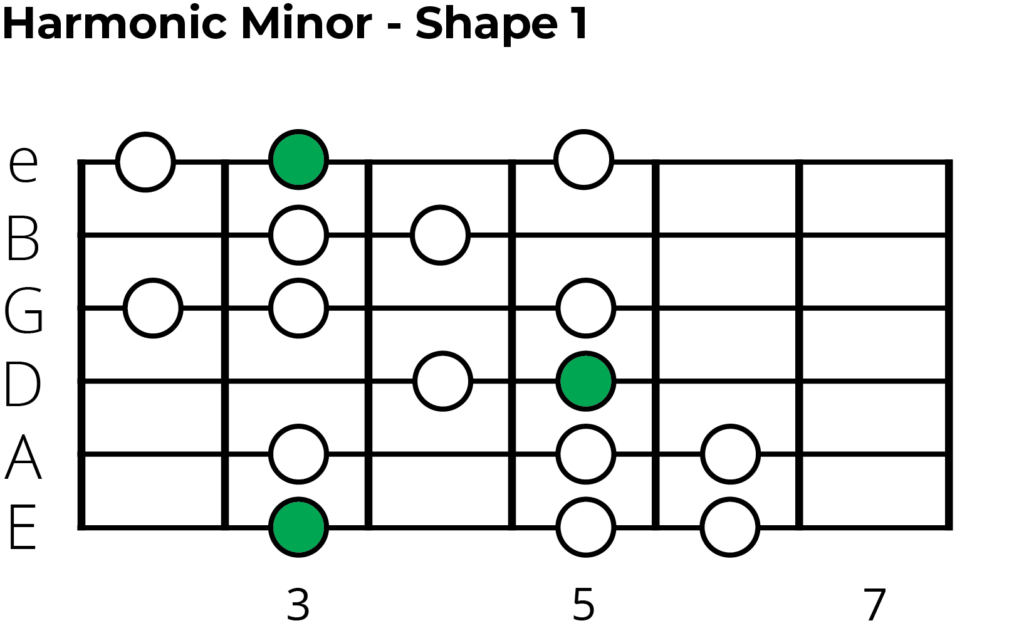
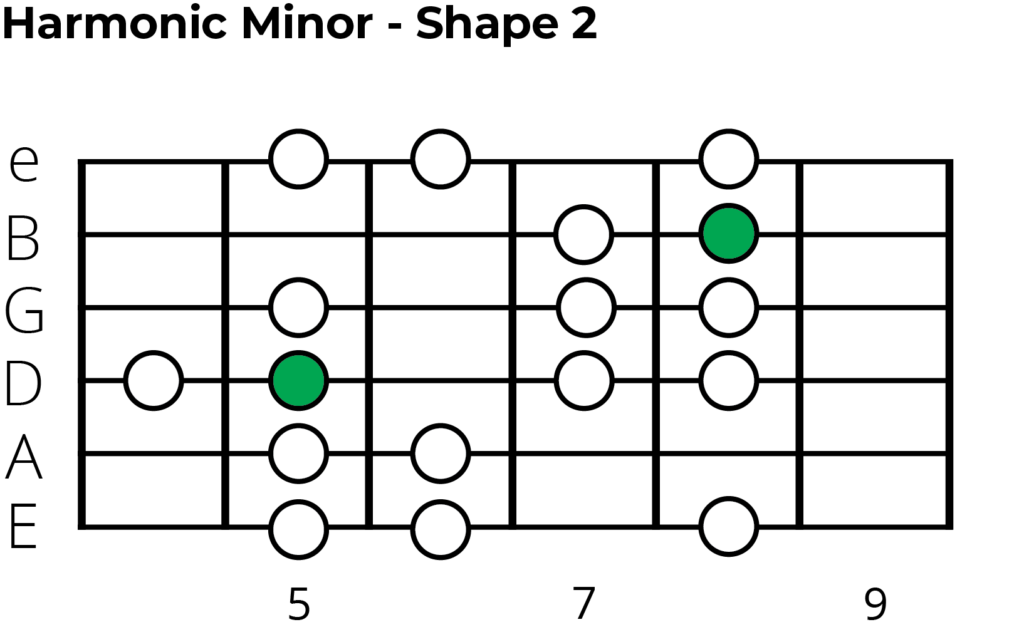
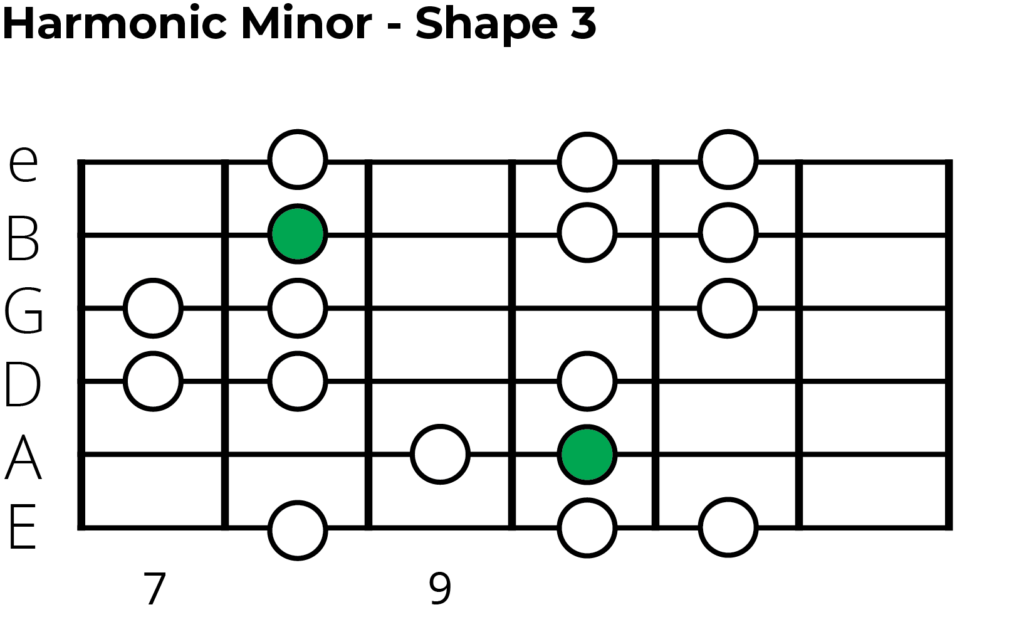
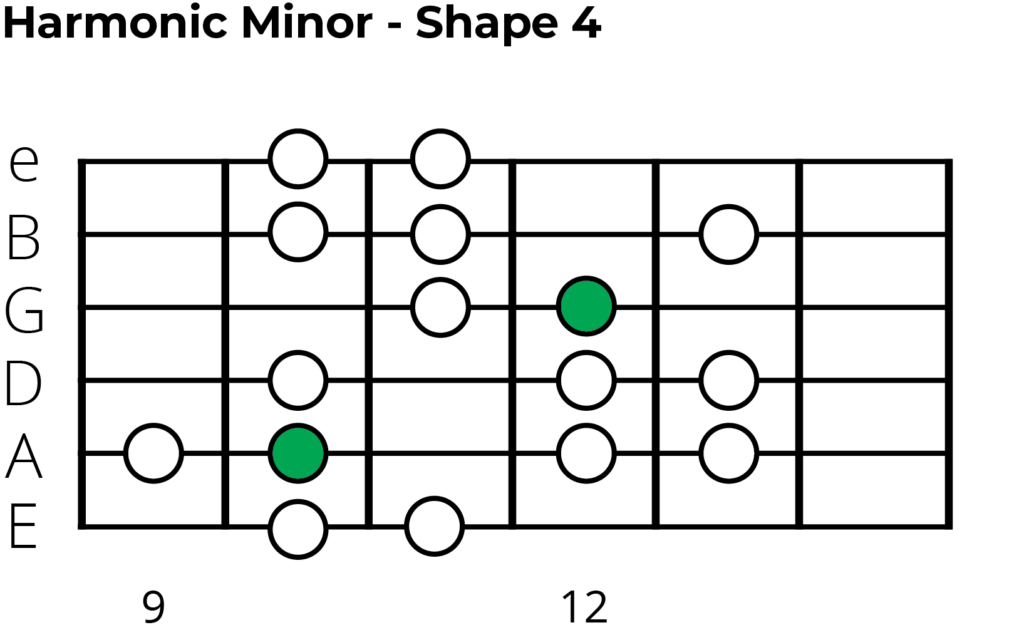

Chords using the Harmonic Minor Scale
We can create chords using the harmonic minor scale that start on each note of the scale. Here is an example using A Harmonic Minor.

Harmonic Minor Modes
The Harmonic Minor scale can be used to create a set of modes. As the natural minor is the Aeolian mode, the harmonic minor would be the Aeolian #7, as we have a raised 7th degree of the scale. By starting on different notes of the scale we get the other modes adjusted for the harmonic minor scale. Below is an example based on A harmonic minor.
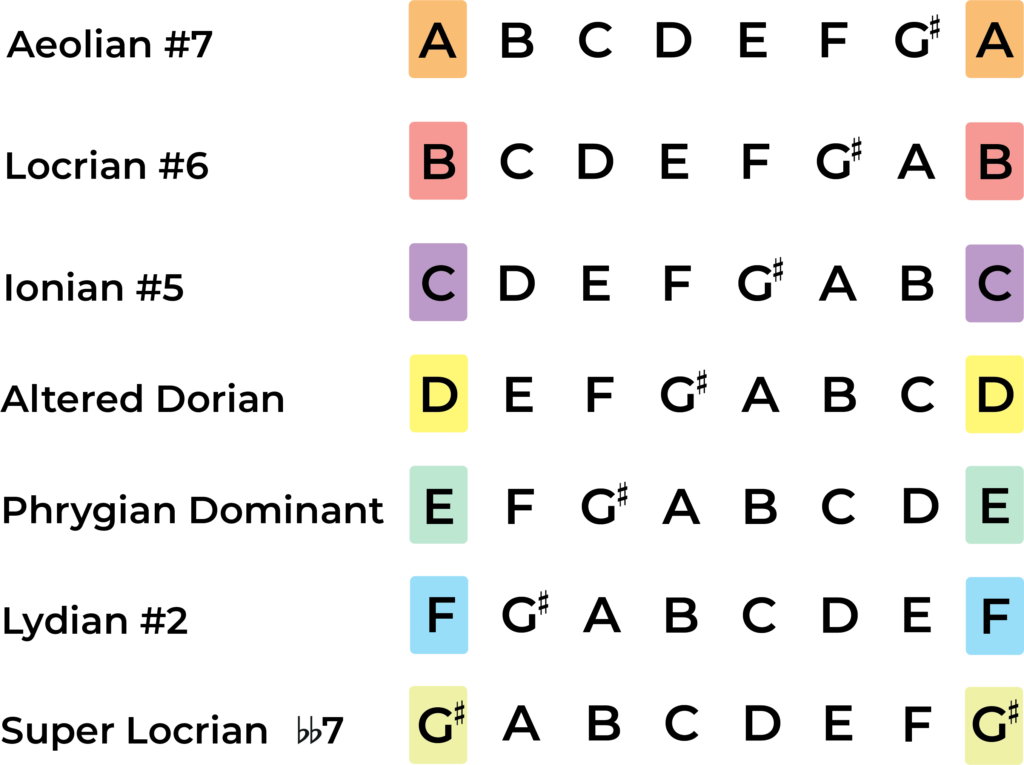
Melodic Minor Scale for Guitar
The melodic minor scale was devised to create beautiful melodies, as the name suggests! It does result in a lot of strange chords being formed, many of which were not used in the Baroque Period.
When compared to the natural minor, the melodic minor has a sharpen 6th and 7th degree when ascending. When descending we lower these notes and play the natural minor scale. This might seem very odd, but it allowed composers to draw from both the natural and harmonic minor scales.

If we sharpen the 6th note of the scale this narrows the interval between the 6th and 7th notes. In the harmonic minor this interval in a minor 3rd and by closing it the intervals of the scale become more evenly spaced.
This scale is not often seen in popular music, with the main example being ‘Yesterday’ by The Beatles. Paul McCartney has stated that the song came to him in a dream and that it reminded him of an old jazz tune. This is fitting as the melodic minor is now most commonly used in jazz improvisation. Its modes are also used, such as the Lydian dominant and Altered Locrian.
Often the ‘jazz minor scale’ is used as in this scale we keep the sharpened 6th and 7th notes when descending the scale.
Guitar Shapes for the Melodic Minor Scale
Here are patterns for melodic minor scales on guitar. All shapes are in G minor and the yellow dots show the root notes.
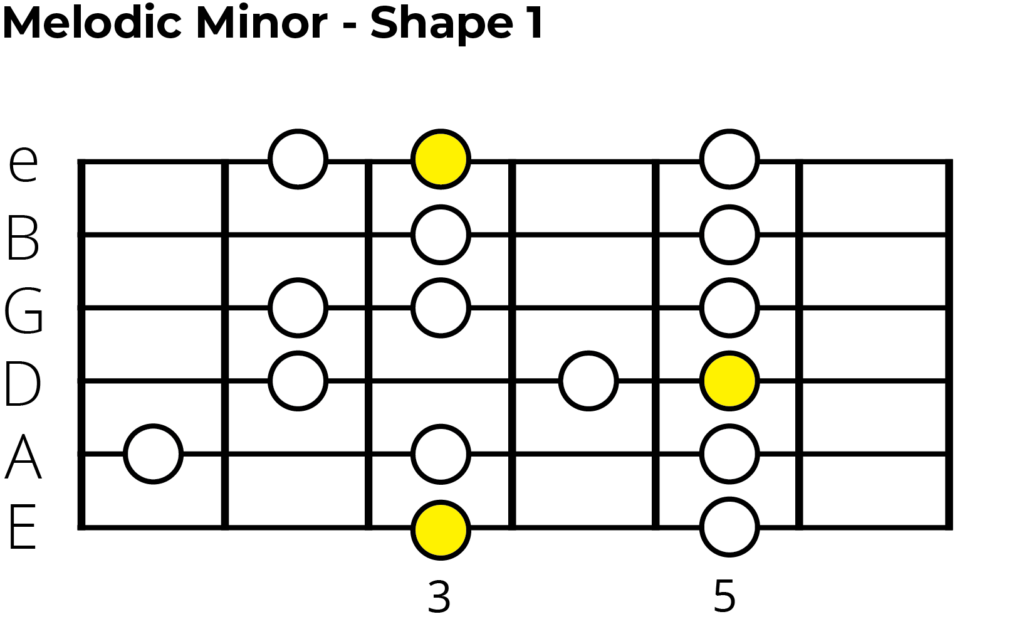
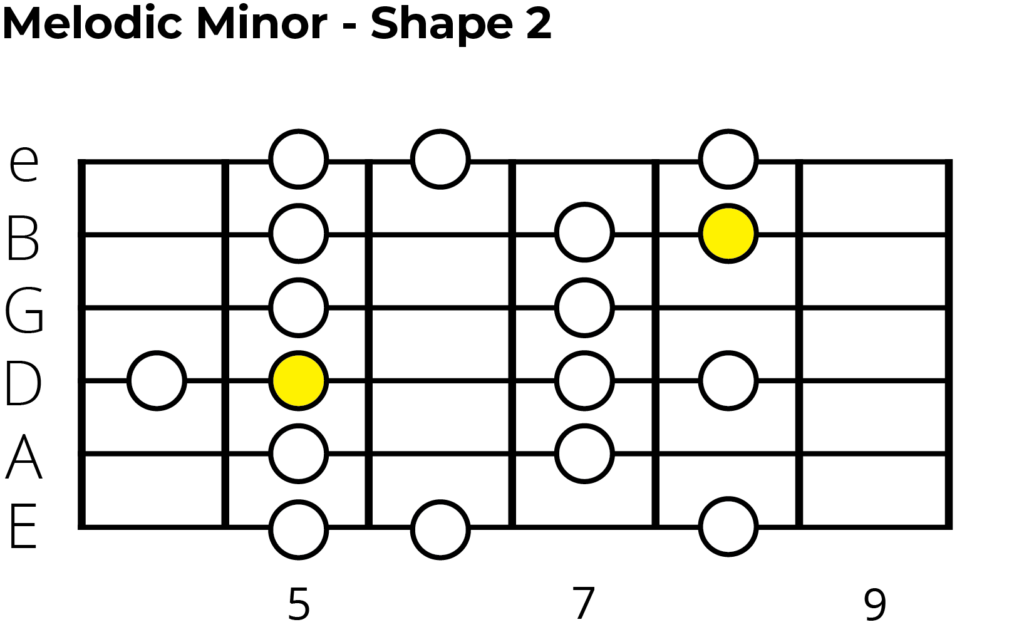
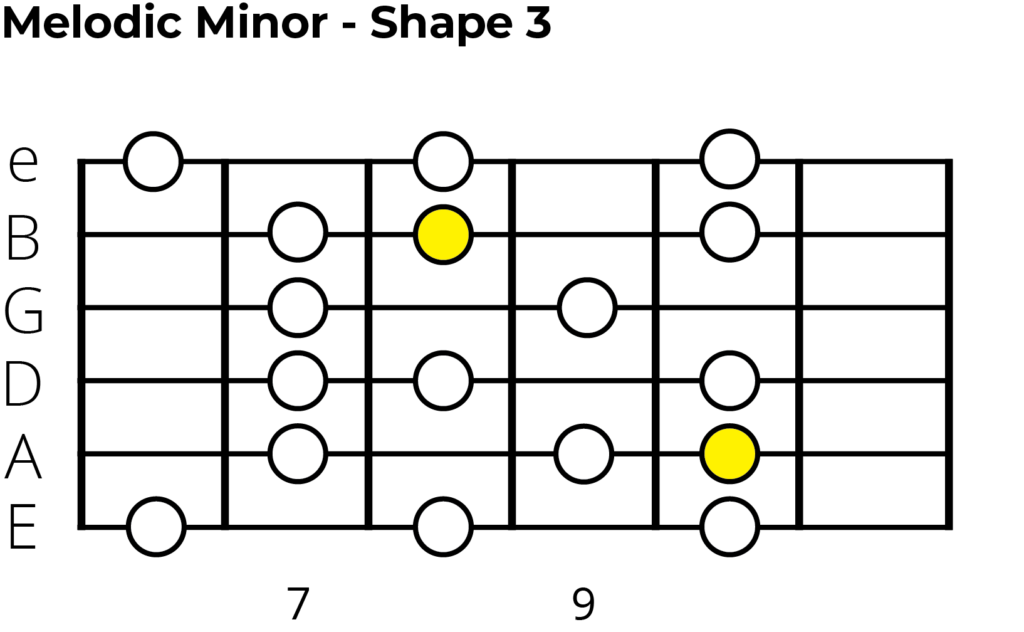
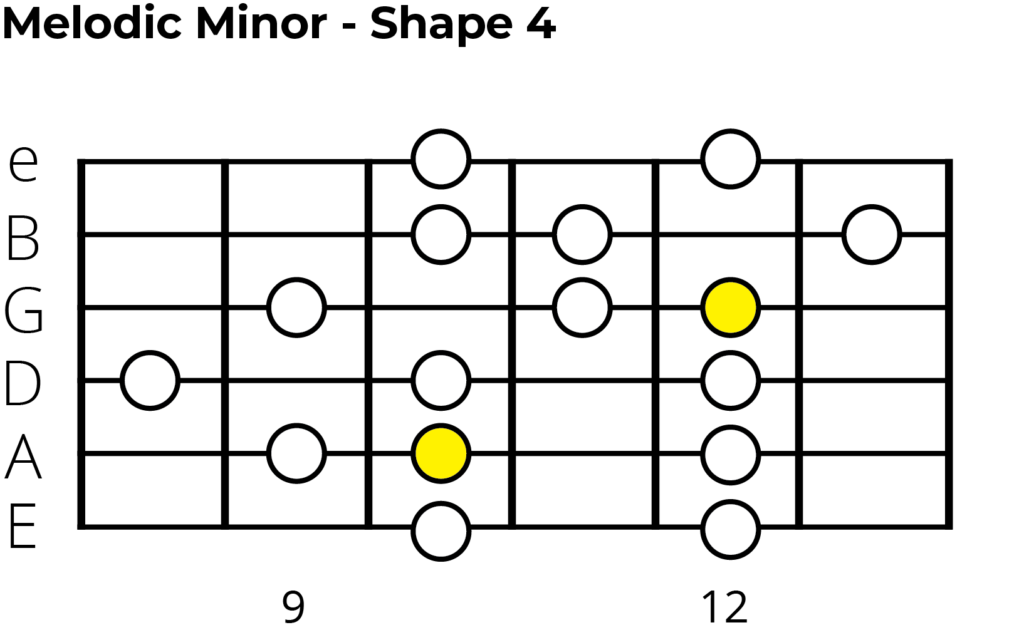
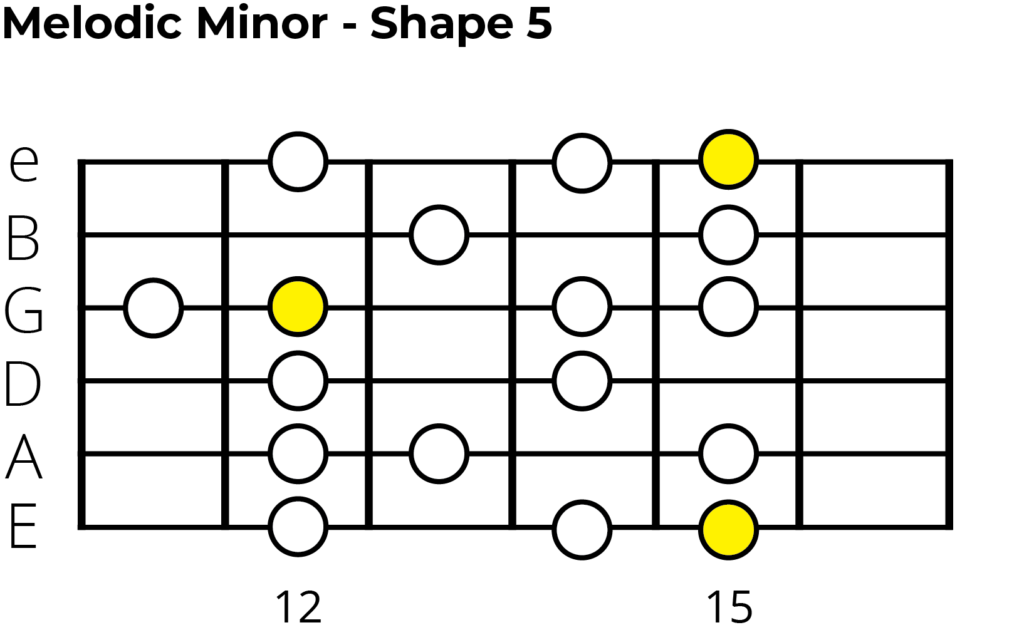
Melodic Minor Modes
The melodic minor can be used to create modes as well. Here are examples for C melodic Minor.
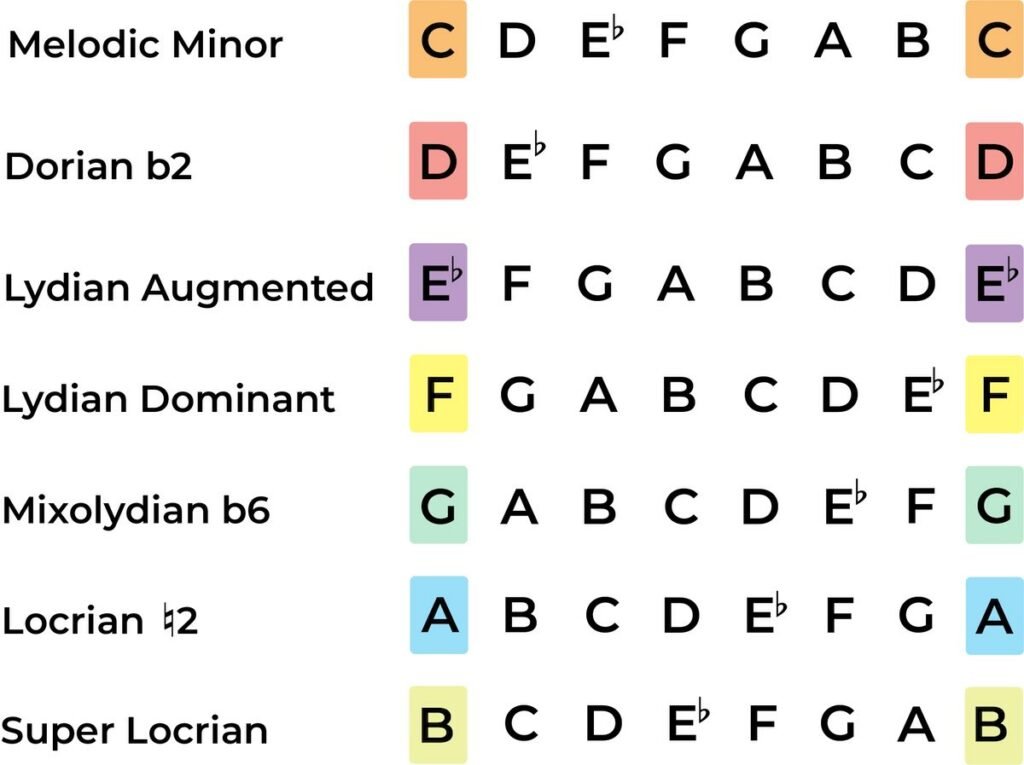
What’s next….?
- Learn about a particular minor scale in our scales and key signature section.
- Learn about modes with our musical guide.
